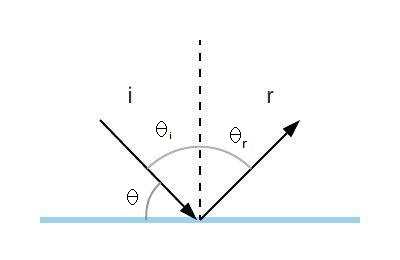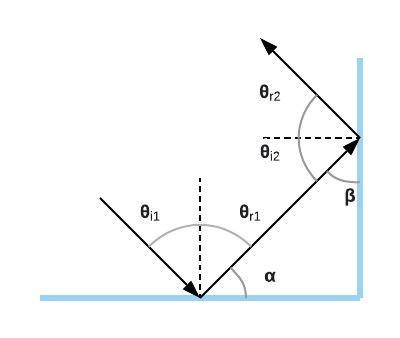Physics: Principles and Problems
9th Edition
Elliott, Haase, Harper, Herzog, Margaret Zorn, Nelson, Schuler, Zitzewitz
ISBN: 9780078458132
Chapter 1: A Physics Toolkit
Section 1.1: Mathematics and Physics
Section 1.2: Measurement
Section 1.3: Graphing Data
Page 24: Assessment
Page 29: Standardized Test Practice
Page 5: Practice Problems
Page 10: Section Review
Page 18: Practice Problems
Page 19: Section Review
Chapter 2: Representing Motion
Section 2.1: Picturing Motion
Section 2.2: Where and When?
Section 2.3: Position-Time Graphs
Section 2.4: How Fast?
Page 52: Assessment
Page 55: Standardized Test Practice
Page 39: Practice Problems
Page 42: Section Review
Page 45: Practice Problems
Page 47: Section Review
Chapter 3: Accelerated Motion
Section 3.1: Acceleration
Section 3.2: Motion with Constant Acceleration
Section 3.3: Free Fall
Page 80: Assessment
Page 85: Standardized Test Practice
Page 61: Practice Problems
Page 64: Section Review
Page 65: Practice Problems
Page 71: Section Review
Page 74: Practice Problems
Page 75: Section Review
Chapter 4: Forces in One Dimension
Section 4.1: Force and Motion
Section 4.2: Using Newton’s Laws
Section 4.3: Interaction Forces
Page 112: Assessment
Page 117: Standardized Test Practice
Page 89: Practice Problems
Page 95: Section Review
Page 97: Practice Problems
Page 101: Section Review
Page 104: Practice Problems
Page 107: Section Review
Chapter 5: Forces in Two Dimensions
Section 5.1: Vectors
Section 5.2: Friction
Section 5.3: Force and Motion in Two Dimensions
Page 140: Assessment
Page 145: Standardized Test Practice
Page 121: Practice Problems
Page 125: Section Review
Page 128: Practice Problems
Page 130: Section Review
Page 133: Practice Problems
Page 135: Section Review
Chapter 6: Motion in Two Dimensions
Section 6.1: Projectile Motion
Section 6.2: Circular Motion
Section 6.3: Relative Velocity
Page 164: Assessment
Page 169: Standardized Test Practice
Page 150: Practice Problems
Page 152: Section Review
Page 156: Section Review
Page 156: Practice Problems
Page 159: Practice Problems
Page 159: Section Review
Chapter 7: Gravitation
Section 7.1: Planetary Motion and Gravitation
Section 7.2: Using the Law of Universal Gravitation
Page 190: Assessment
Page 195: Standardized Test Practice
Page 174: Practice Problems
Page 178: Section Review
Page 181: Practice Problems
Page 185: Section Review
Chapter 8: Rotational Motion
Section 8.1: Describing Rotational Motion
Section 8.2: Rotational Dynamics
Section 8.3: Equilibrium
Page 222: Assessment
Page 227: Standardized Test Practice
Page 200: Section Review
Page 200: Practice Problems
Page 203: Practice Problems
Page 210: Section Review
Page 215: Practice Problems
Page 217: Section Review
Chapter 9: Momentum and Its Conservation
Section 9.1: Impulse and Momentum
Section 9.2: Conservation of Momentum
Page 250: Assessment
Page 255: Standardized Test Practice
Page 233: Practice Problems
Page 235: Section Review
Page 238: Practice Problems
Page 245: Section Review
Chapter 10: Energy, Work, and Simple Machines
Section 10.1: Energy and Work
Section 10.2: Machines
Page 278: Assessment
Page 283: Standardized Test Practice
Page 261: Practice Problems
Page 265: Section Review
Page 272: Practice Problems
Page 273: Section Review
Chapter 11: Energy and Its Conservation
Section 11.1: The Many Forms of Energy
Section 11.2: Conservation of Energy
Page 306: Assessment
Page 311: Standardized Test Practice
Page 287: Practice Problems
Page 292: Section Review
Page 297: Practice Problems
Page 301: Section Review
Chapter 12: Thermal Energy
Section 12.1: Temperature and Thermal Energy
Section 12.2: Changes of State and the Laws of Thermodynamics
Page 336: Assessment
Page 339: Standardized Test Practice
Page 317: Practice Problems
Page 322: Section Review
Page 325: Practice Problems
Page 331: Section Review
Chapter 13: State of Matter
Section 13.1: Properties of Fluids
Section 13.2: Forces Within Liquids
Section 13.3: Fluids at Rest and in Motion
Section 13.4: Solids
Page 368: Assessment
Page 373: Standardized Test Practice
Page 344: Practice Problems
Page 348: Section Review
Page 353: Practice Problems
Page 358: Section Review
Page 362: Practice Problems
Page 363: Section Review
Chapter 14: Vibrations and Waves
Section 14.1: Periodic Motion
Section 14.2: Wave Properties
Section 14.3: Wave Behavior
Page 396: Assessment
Page 401: Section Review
Page 386: Practice Problems
Page 386: Section Review
Chapter 15: Sound
Section 15.1: Properties of Detection of Sound
Section 15.2: The Physics of Music
Page 424: Assessment
Page 429: Standardized Test Practice
Page 405: Practice Problems
Page 410: Section Review
Page 416: Practice Problems
Page 419: Section Review
Chapter 16: Fundamentals of Light
Section 16.1: Illumination
Section 16.2: The Wave Nature of Light
Page 452: Assessment
Page 455: Standardized Test Practice
Page 436: Practice Problems
Page 438: Section Review
Page 447: Section Review
Page 447: Practice Problems
Chapter 17: Reflections and Mirrors
Section 17.1: Reflection from Plane Mirrors
Section 17.2: Curved Mirrors
Page 478: Assessment
Page 483: Standardized Test Practice
Page 460: Practice Problems
Page 463: Section Review
Page 469: Practice Problems
Page 473: Section Review
Chapter 18: Refraction and lenses
Section 18.1: Refraction of Light
Section 18.2: Convex and Concave Lenses
Section 18.3: Applications of Lenses
Page 508: Assessment
Page 513: Standardized Test Practice
Page 487: Practice Problems
Page 492: Section Review
Page 496: Practice Problems
Page 499: Section Review
Chapter 19: Interference and Diffraction
Section 19.1: Interference
Section 19.2: Diffraction
Page 536: Assessment
Page 539: Standardized Test Practice
Page 519: Practice Problems
Page 523: Section Review
Page 526: Practice Problems
Page 531: Section Review
Chapter 20: Static Electricity
Section 20.1: Electric Charge
Section 20.2: Electric Force
Page 558: Assessment
Page 561: Standardized Test Practice
Page 552: Practice Problems
Page 553: Section Review
Chapter 21: Electric Fields
Section 21.1: Creating and Measuring Electric Fields
Section 21.2: Applications of Electric Fields
Page 584: Assessment
Page 589: Standardized Test Practice
Page 565: Practice Problems
Page 568: Section Review
Page 571: Practice Problems
Page 579: Section Review
Chapter 22: Current Electricity
Section 22.1: Current and Circuits
Section 22.2: Using Electric Energy
Page 610: Assessment
Page 615: Standardized Test Practice
Page 594: Practice Problems
Page 600: Section Review
Page 603: Practice Problems
Page 605: Section Review
Chapter 23: Series and Parallel Circuits
Section 23.1: Simple Circuits
Section 23.2: Applications of Circuits
Page 636: Assessment
Page 641: Standardized Test Practice
Page 619: Practice Problems
Page 626: Section Review
Page 630: Practice Problems
Page 631: Section Review
Chapter 24: Magnetic Fields
Section 24.1: Magnets: Permanent and Temporary
Section 24.2: Forces Caused by Magnetic Fields
Page 664: Assessment
Page 669: Standardized Test Practice
Page 647: Practice Problems
Page 651: Section Review
Page 654: Practice Problems
Page 659: Section Review
Chapter 25: Electromagnetic Induction
Section 25.1: Electric Current from Changing Magnetic Fields
Section 25.2: Changing Magnetic Fields Induce EMF
Page 690: Assessment
Page 695: Standardized Test Practice
Page 675: Practice Problems
Page 678: Section Review
Page 684: Practice Problems
Page 685: Section Review
Chapter 26: Electromagnetism
Section 26.1: Interactions of Electric and Manetic Fields and Matter
Section 26.2: Electric and Magnetic Fields in Space
Page 718: Assessment
Page 721: Standardized Test Practice
Page 700: Practice Problems
Page 704: Section Review
Page 706: Practice Problems
Page 713: Section Review
Chapter 27: Quantum Theory
Section 27.1: A Particle Model of Waves
Section 27.2: Matter Waves
Page 742: Assessment
Page 745: Standardized Test Practice
Page 730: Practice Problems
Page 734: Section Review
Page 736: Practice Problems
Page 737: Section Review
Chapter 28: The Atom
Section 28.1: The Bohr Model of the Atom
Section 28.2: The Quantum Model of the Atom
Page 770: Assessment
Page 773: Standardized Test Practice
Page 757: Practice Problems
Page 759: Section Review
Chapter 29: Solid-State Electronics
Section 29.1: Conduction in Solids
Section 29.2: Electronic Devices
Page 794: Assessment
Page 797: Standardized Test Practice
Page 778: Practice Problems
Page 783: Section Review
Page 786: Practice Problems
Page 789: Section Review
Chapter 30: Nuclear Physics
Section 30.1: The Nucleus
Section 30.2: Nuclear Decay and Reactions
Section 30.3: The Building Blocks of Matter
Page 828: Assessment
Page 831: Standardized Test Practice
Page 801: Practice Problems
Page 805: Section Review
Page 808: Practice Problems
Page 814: Section Review
Page 821: Practice Problems
Page 823: Section Review



